Let’s talk about a phenomenon called “pitch-slapping.”
You research a product through Google and click on a relevant landing page. Before you can even learn more about the product, you get slammed with content trying to pitch you. You hardly even know what they want you to buy, let alone why you should buy it.
Well, that settles it. You click the “back” button.
If you want to create landing pages that encourage your new visitors to click your call to action button, don’t be a pitch-slapper. Optimize your landing page for the top of the conversion funnel, where your customers are getting to know your brand.
This blog post will explain what the top of the funnel is and how you can build a landing page for this phase of the marketing process.
TOFU: It’s Not Just a Protein
The top of the funnel (TOFU) is the first stage of the conversion funnel—the steps that a customer takes on their journey from search to sale. In 2021, more than a third of marketers told HubSpot that their top marketing priority was generating leads. TOFU is where that magic starts to happen.
Your TOFU customers aren’t ready to buy your product yet. Instead, they want to learn more about your niche as a whole. They have questions, and you’re in the position to answer them.
Once you get on a customer’s radar during the TOFU stage, you can get more product-focused in the middle of the funnel (MOFU) and bottom of the funnel (BOFU). You establish authority in the TOFU stage so you can grow trust in MOFU and snag a conversion in BOFU.
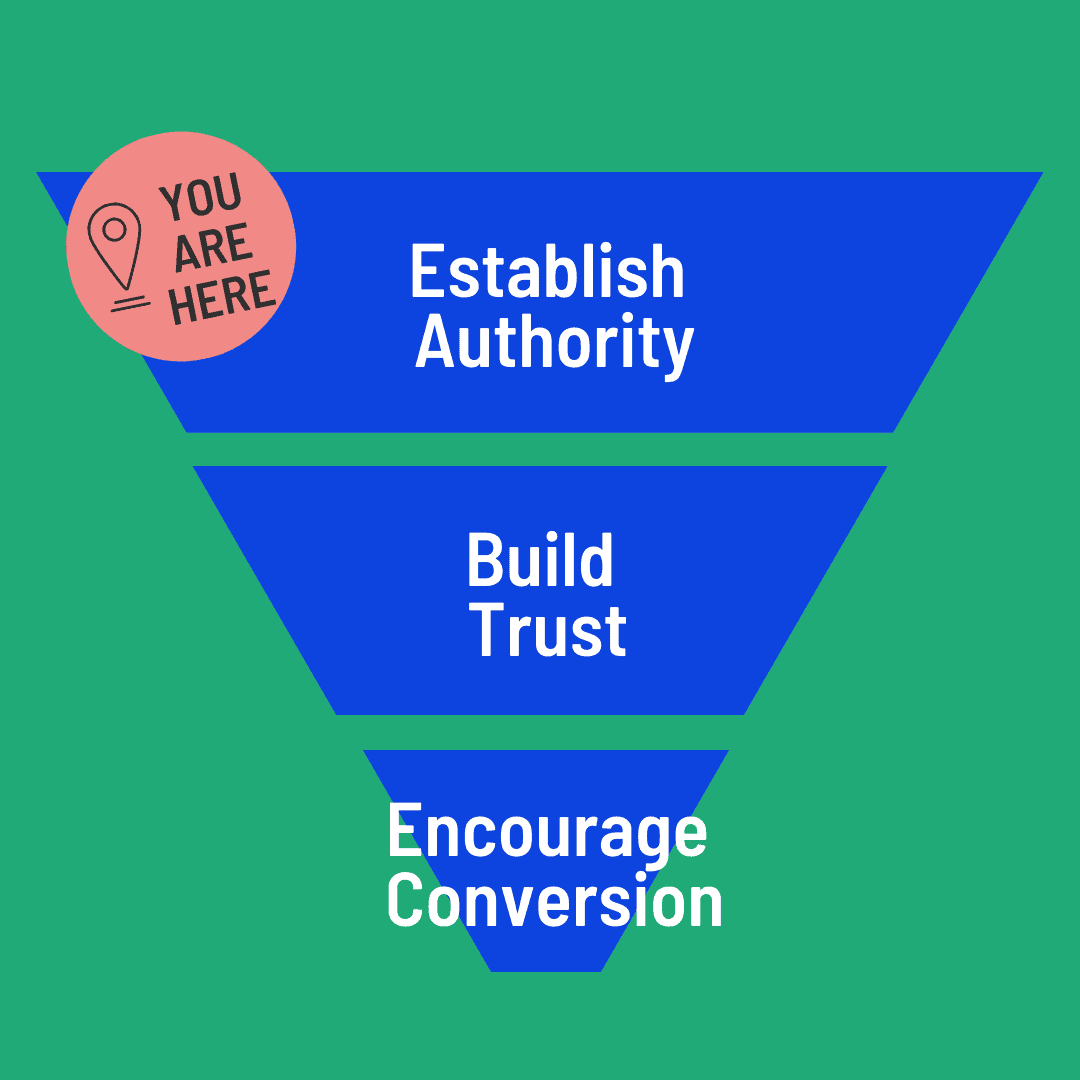
How to Tailor Your Landing Page to TOFU Customers
A TOFU landing page should make a good first impression on your customers. Here’s how you can craft a TOFU-friendly landing page:
Give your headline some TLC
Good headlines aren’t just for articles and blog posts. Your landing page’s top header gives the first impression fast. After all, according to visual hierarchy rules, it’s probably the first line of text your visitors will see.
Building a good headline from scratch might seem daunting, but you don’t have to start from zero. Try using a tried and tested headline formula to give it some structure.
Some examples of headline formulas include:
- Call to action headlines that show what your product empowers customers to do.
- How-to headlines that set you up to explain something to your visitors.
- Playful headlines that use wordplay or cheeky phrases to pique interest.
Editor’s note: Having trouble choosing the right headline formula for your page? Smart Builder uses AI to suggest the right headlines and copy for your audience.
This ActiveCampaign landing page uses a call to action headline to show that its software goes beyond email automation:
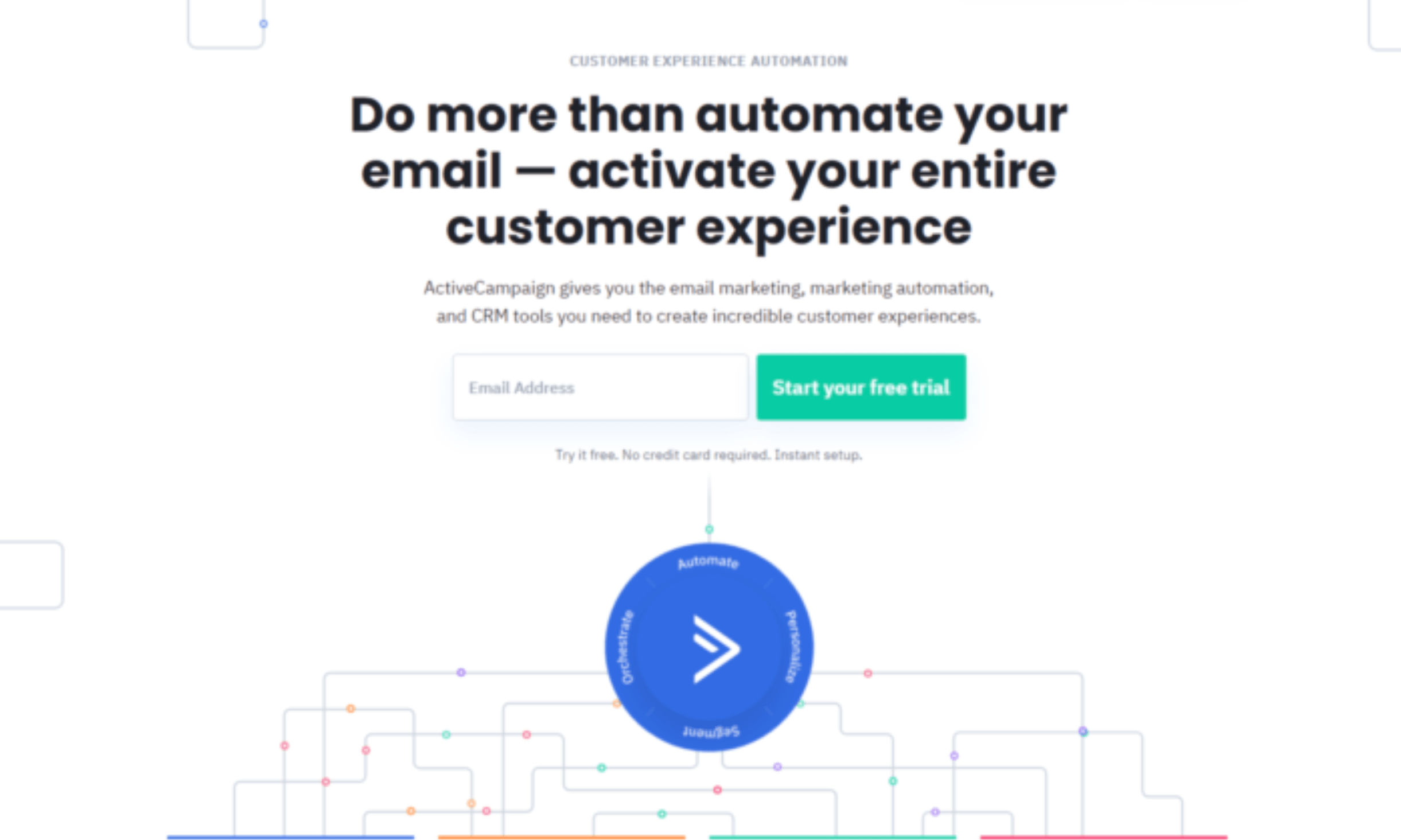
The headline explains that you may hear of ActiveCampaign as an email automation platform, but it actually automates many aspects of the customer experience. It makes an excellent introduction for visitors who don’t know much about the platform.
Stay away from jargon
Jargon is language that only makes sense in a specific professional niche. In most landing page copy, you should avoid it as much as possible, but this rule especially applies to TOFU landing pages.
TOFU customers have a higher chance of having a surface-level understanding of your topic than visitors in other steps of the funnel. So, jargon will become even more of a turn-off for these folks just starting to understand your product.
Plus, jargon can distract from your brand’s value proposition—the message expressing your main value to your customers. You wanna make your value prop as clear as possible to TOFU visitors to nail that first impression.
Check out how Bench presents its bookkeeping platform and services:
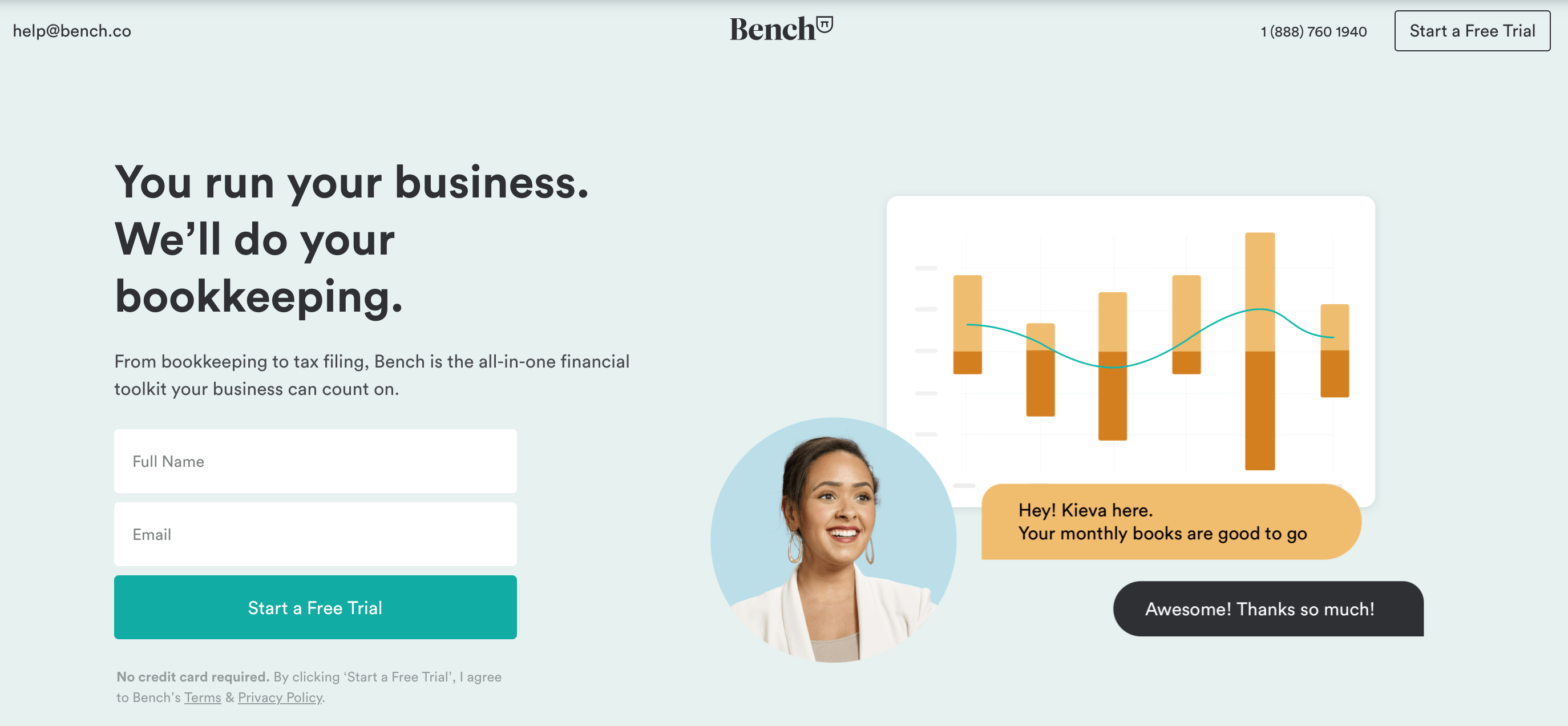
Bookkeeping involves a ton of tricky terms and processes. This landing page focuses on what Bench can do to simplify bookkeeping instead of digging into those complicated elements. If you’re trying to figure out how to explain your product without jargon, try framing it based on what it can do for your customer instead of what it is.
Add relevant keywords
You should always incorporate relevant keywords into your landing page content, but this practice has the most significant impact on TOFU pages compared to MOFU and BOFU pages. TOFU customers have the lowest chance of using branded search terms to find your landing page. So, you’ll need to target relevant words that bring in visitors looking for information.
When you target keywords in your broader niche, you’ll also get the chance to educate new customers on your industry and build their trust.
Let’s say you sell fountain pens and build a TOFU landing page that includes general information on fountain pens. Visitors who search for “types of fountain pens” might come across your page and appreciate that you went out of your way to educate them. Once they’re further down the funnel, they’ll be more likely to consider you as an option for their final purchase.
For example, Zola draws in customers learning about wedding invitations with a quick FAQ on this landing page:
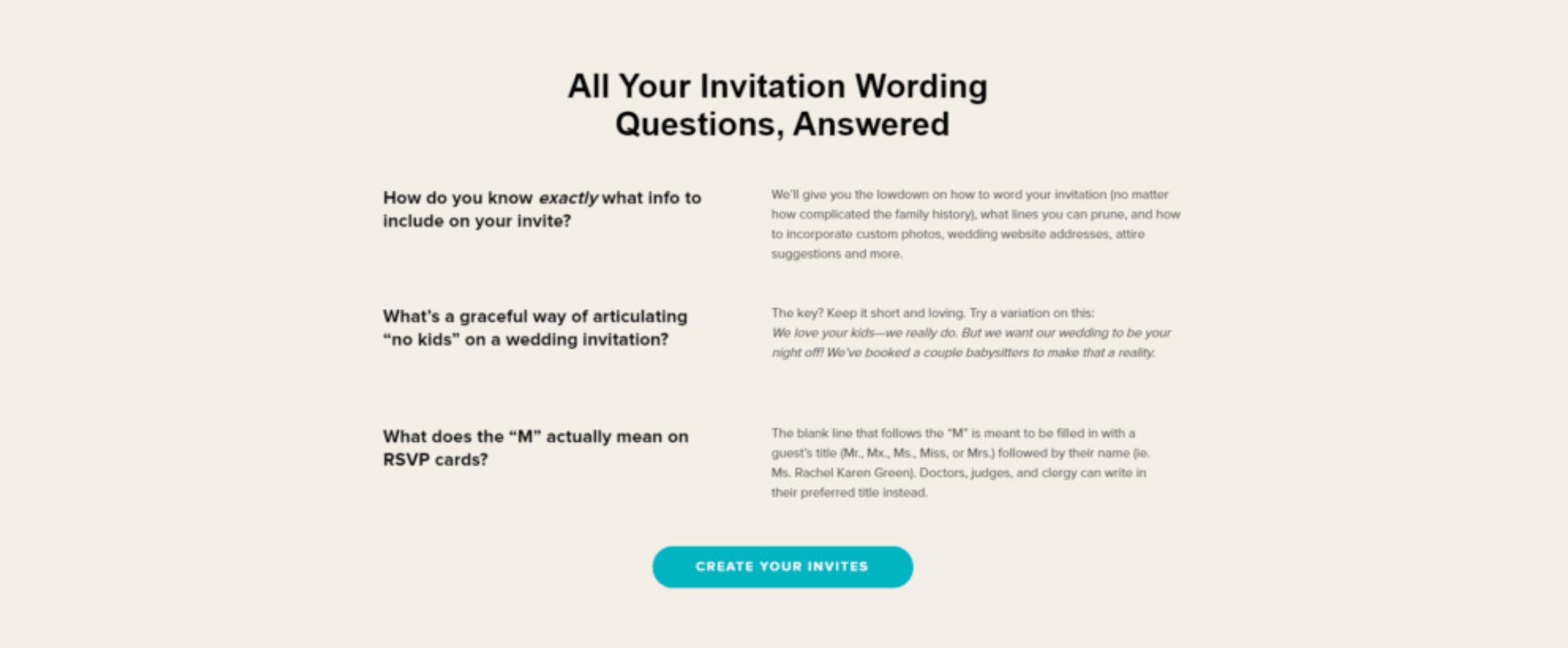
People who come to this landing page trying to learn about wedding invitations will come away with new knowledge on wording their invitations. For instance, someone searching how to make their wedding adults-only politely might come across Zola’s page and consider them in the future. Plus, anyone who comes back during the BOFU stage will be better equipped to use Zola’s invitations.
Show off your success with social proof
At the TOFU stage, your visitor doesn’t have much reason to trust you yet, so you’ve gotta provide that evidence. Social proof, or proof that other customers like your product, fits the bill perfectly. It shows your visitors that people like them choose your product, so they don’t have to just hear it from you.
Here are some types of social proof to think about for your landing page:
- Reviews
- Testimonials
- Social media mentions
- Trust seals and accreditations
- Client logos
This example gets pretty meta. Shoutout, a service that collects positive tweets about your brand into a wall, uses its own Shoutout wall on its landing page.
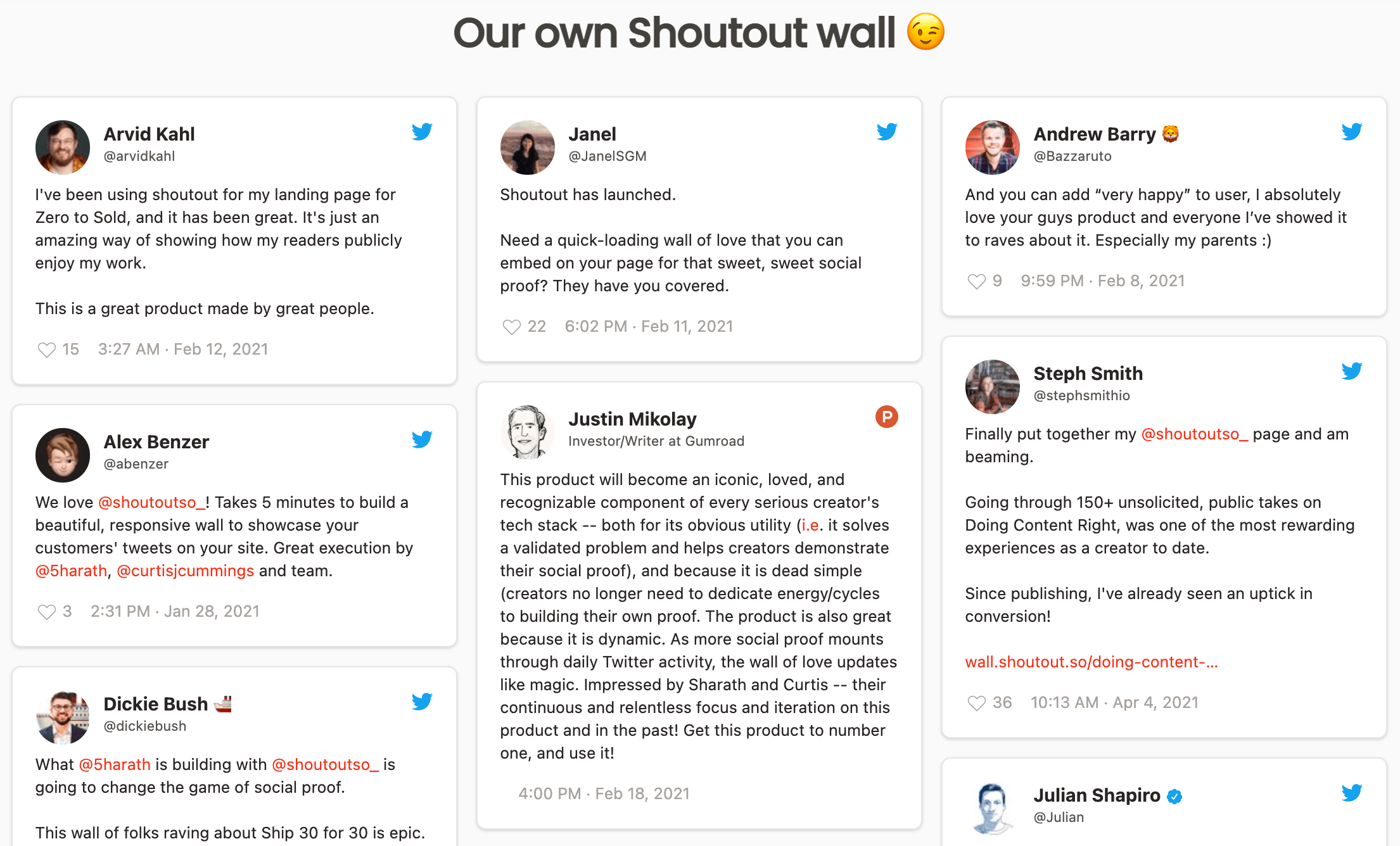
Social media posts like these provide unedited customer feedback, saving you time and providing more authentic social proof.
Start an ongoing relationship
Think of every TOFU page as the start of a relationship. Since 96% of website visitors aren’t ready to buy your product yet, you want to create a call-to-action (CTA) that helps them get to know you first. Don’t rush for a hard sell on the first visit.
Popular CTAs for TOFU customers include reading more on your website, connecting on social media, and joining a newsletter. Some marketers like to create lead magnet landing pages where visitors get a free download if they submit their contact info. Think of ways that you can keep your brand information flowing to your new customer.
Look how Later’s lead magnet landing page doesn’t have a platform signup as its CTA. Instead, it asks customers to enter their email to get a guide to influencer marketing:
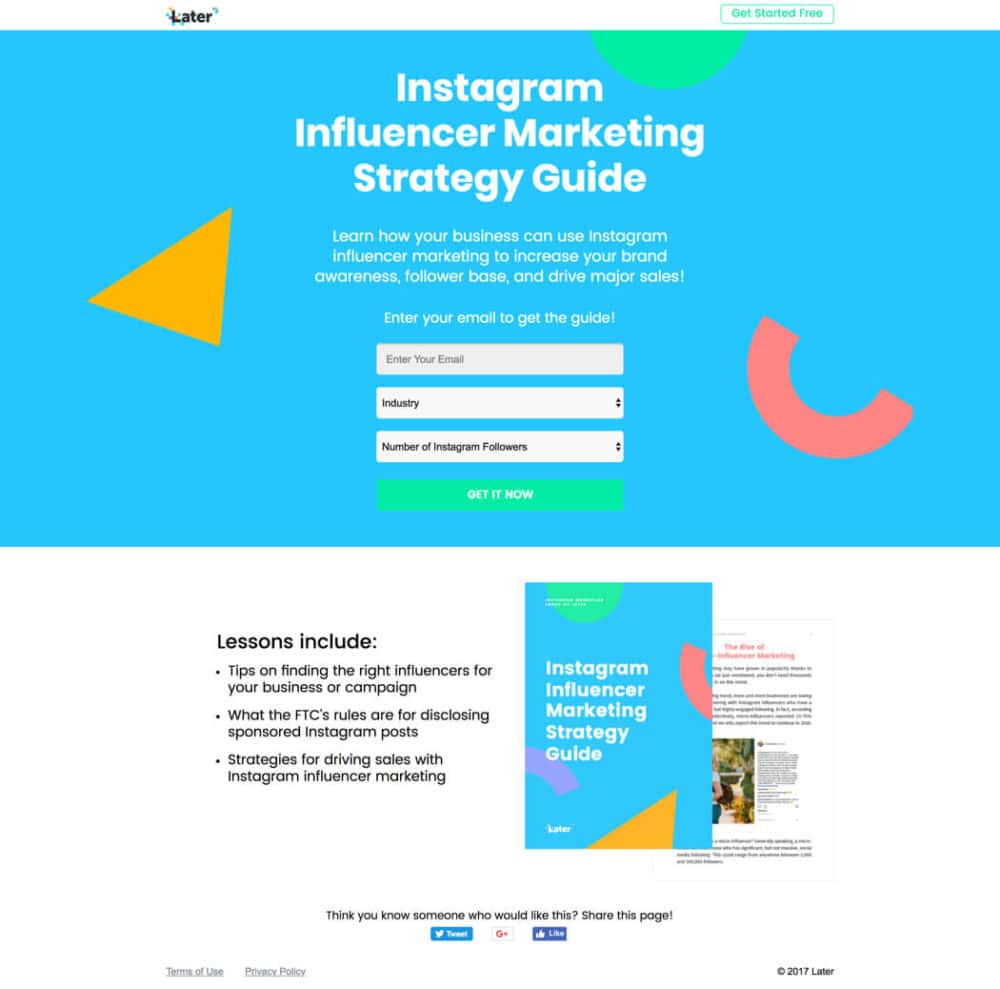
When visitors submit their contact info, they’ll get Later’s guide and ongoing updates to keep the brand on their minds.
Serve the Right Pages to the Right Funnel Stages
Before you dig into your TOFU landing page, remember this: TOFU is just one stage of the funnel. While your TOFU audience will respond well to an introductory approach, your MOFU and BOFU audiences will need different language and optimization.
As you set up your landing page campaigns, consider which pages will go to which funnel stages. Then, tailor each page to its specific funnel stage and audience. If you want help copywriting for visitors in each funnel stage, try Unbounce’s Smart Builder. After you provide some info on your goals and audience, it provides insights and copy suggestions to help you nail your copy.

![[Build – MOFU] Landing Page Product Page – V1 – 2024](https://unbounce.com/photos/Build-MOFU-Landing-Page-Product-Page-V1-2024.jpg)
